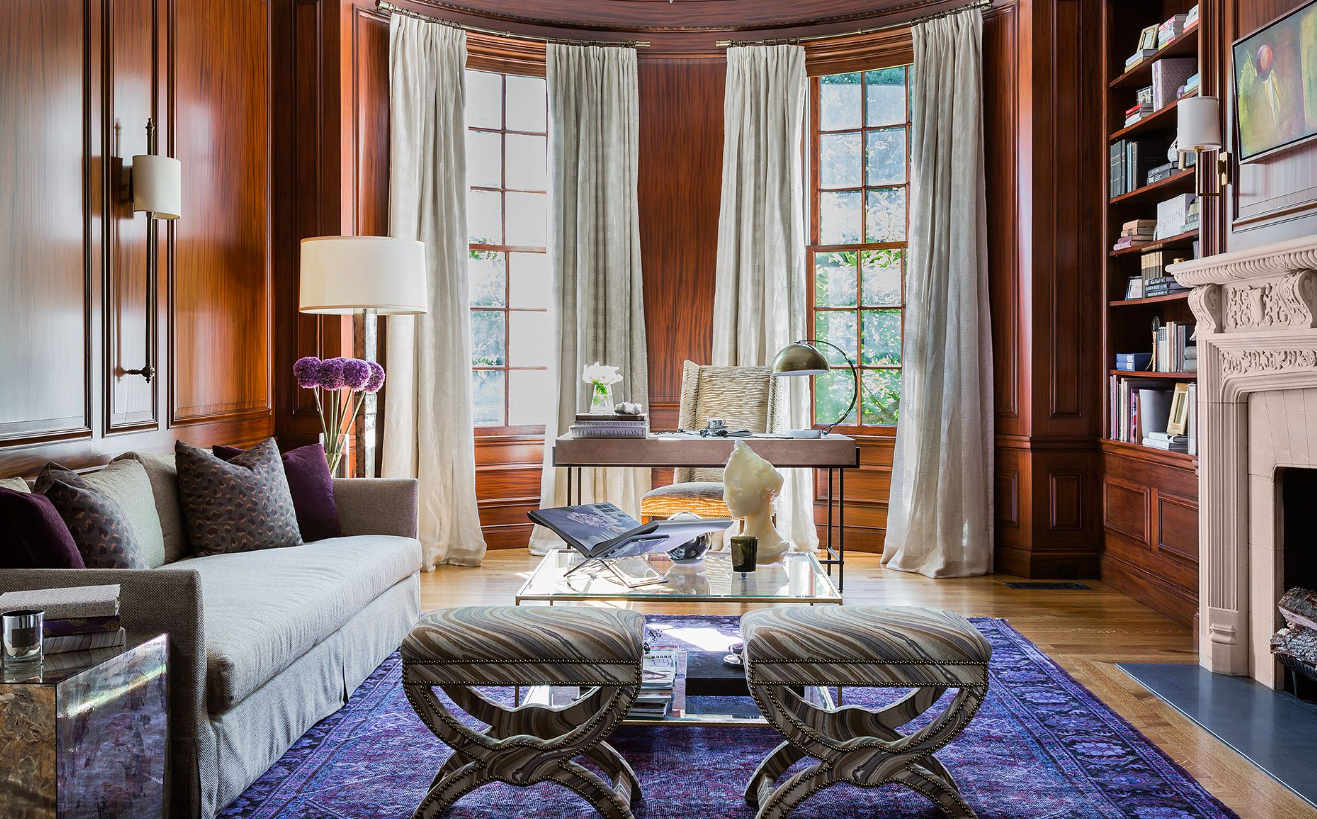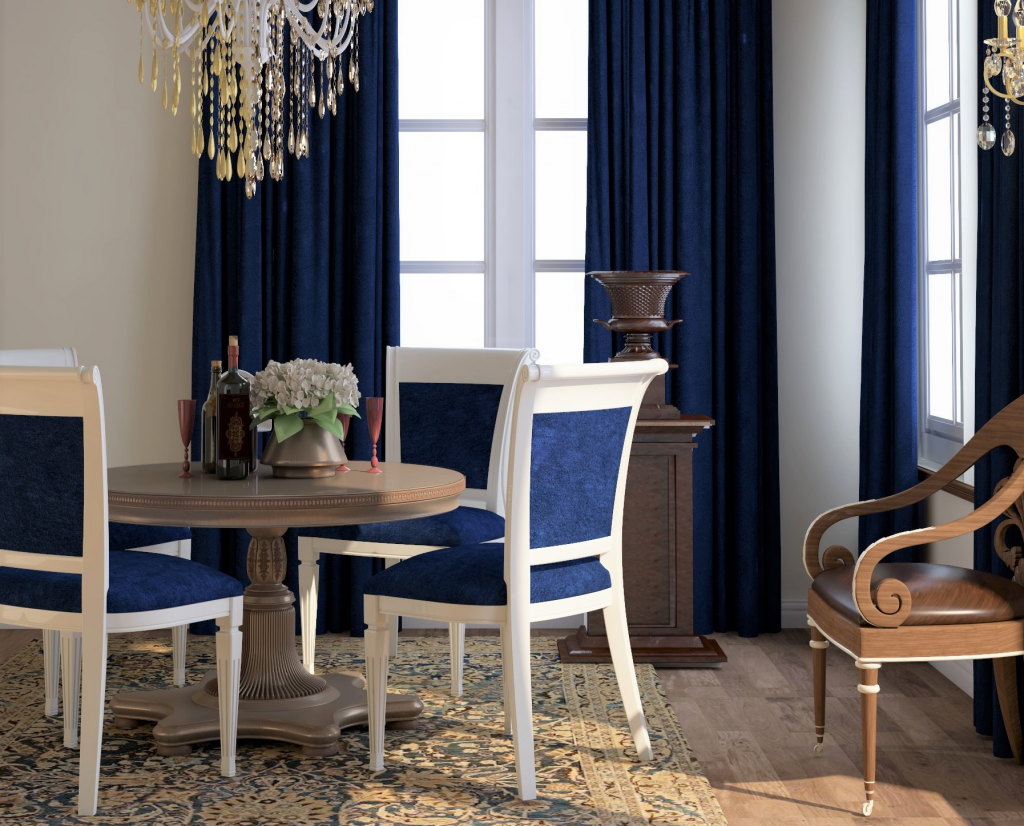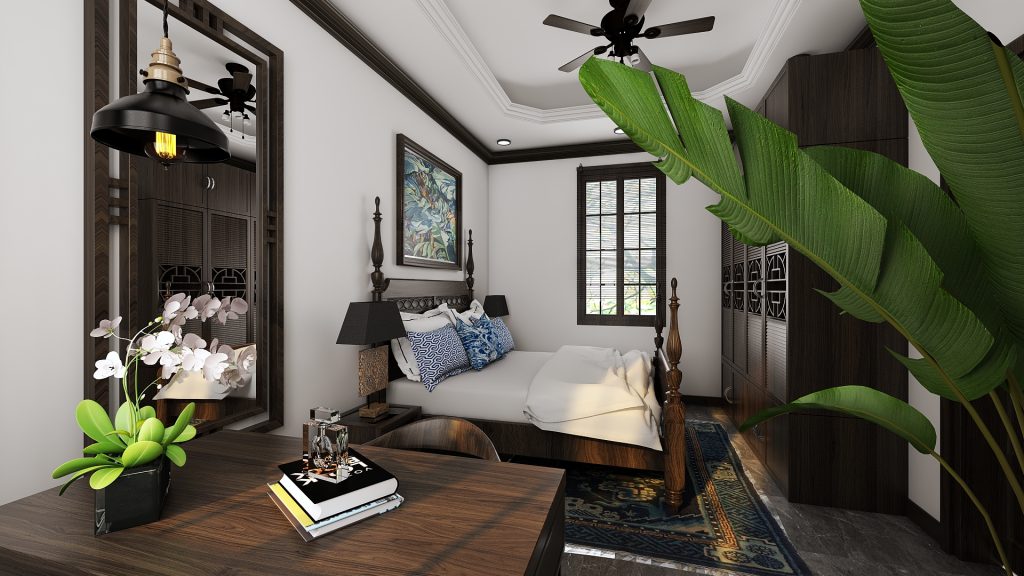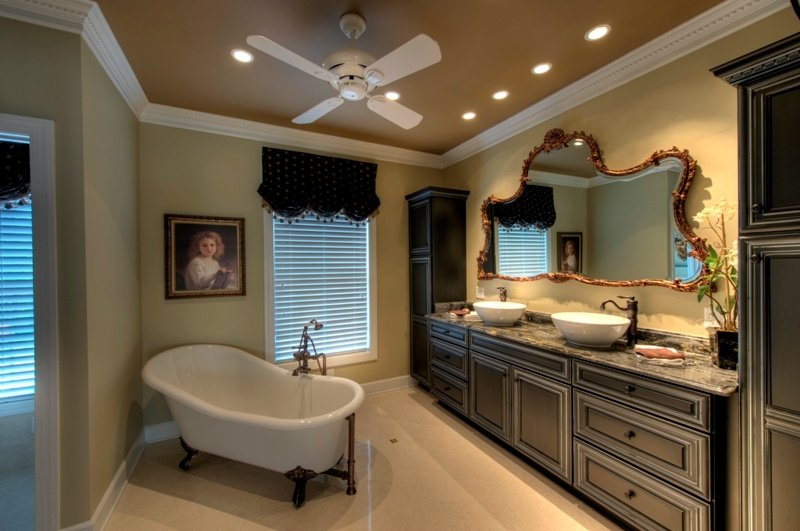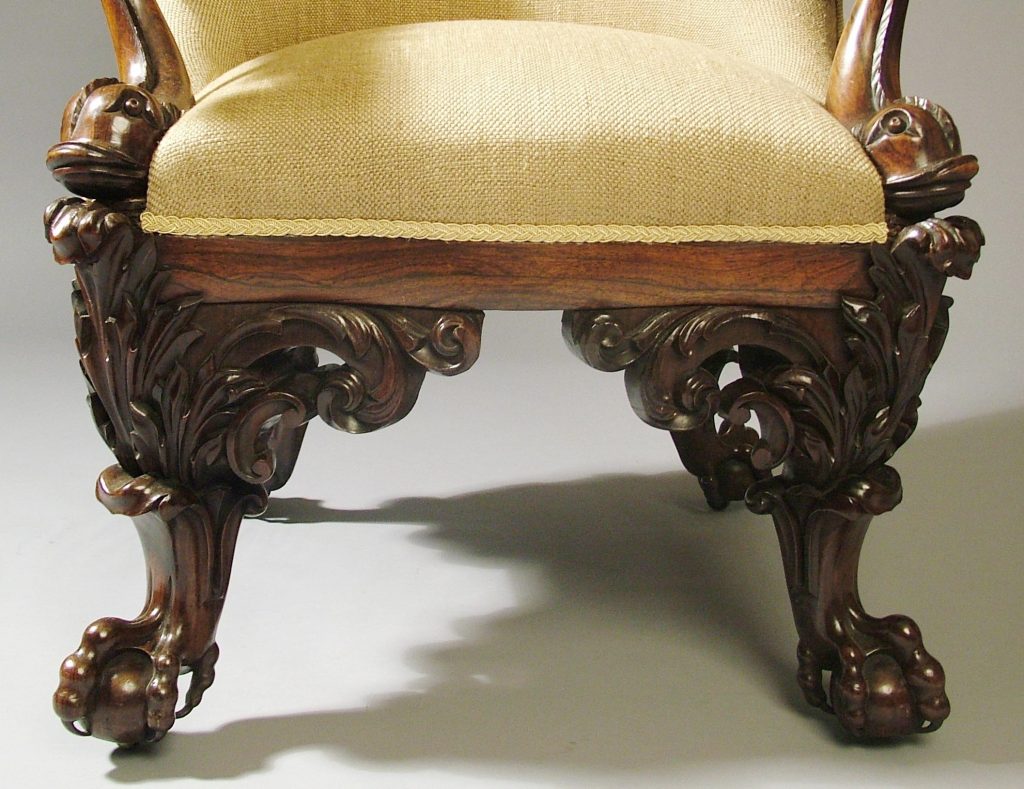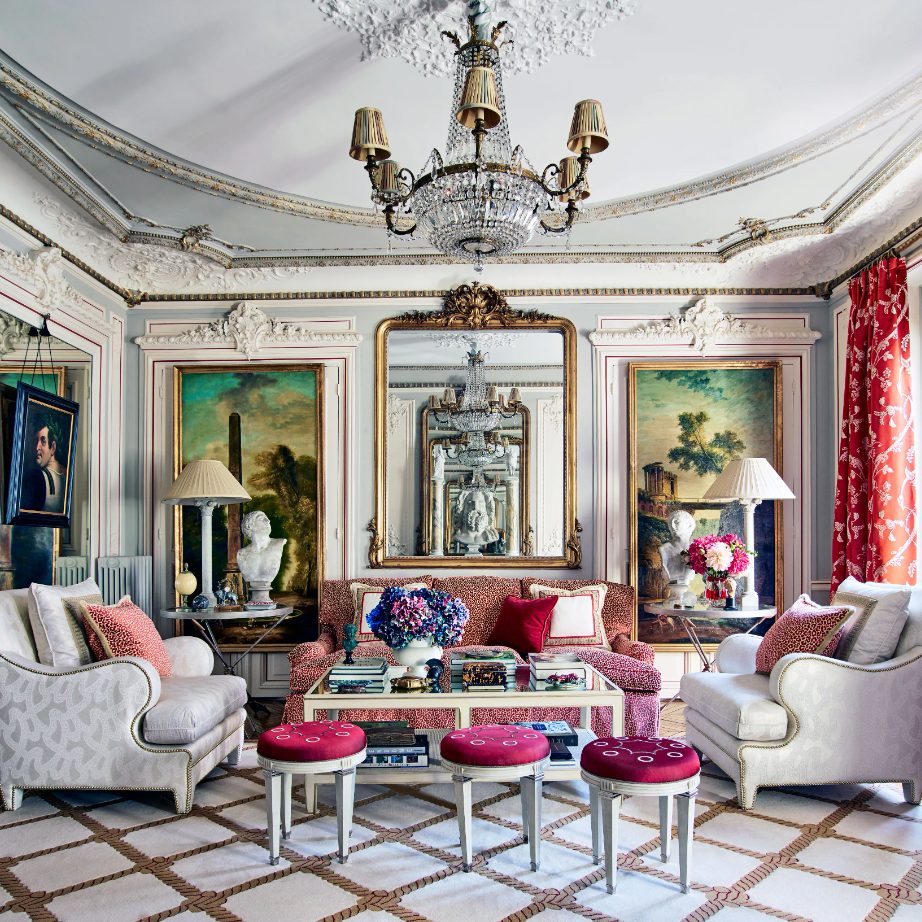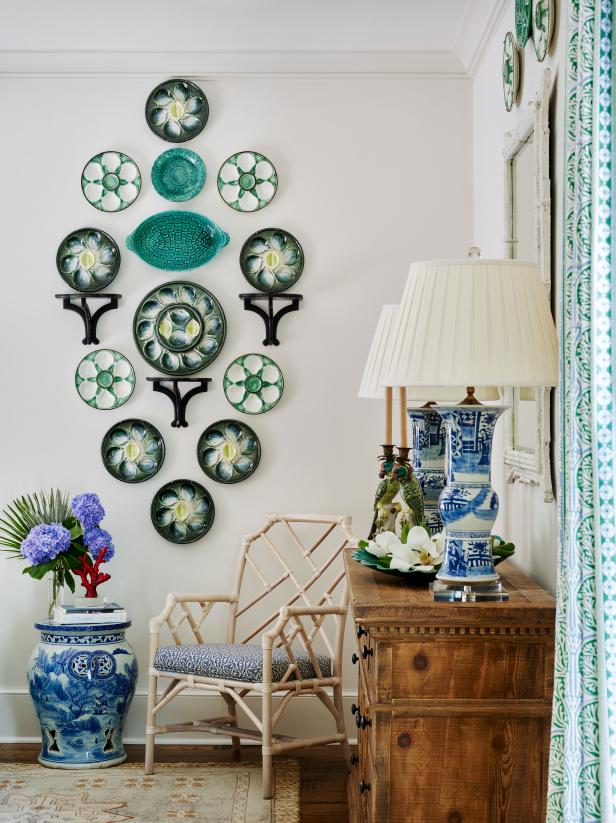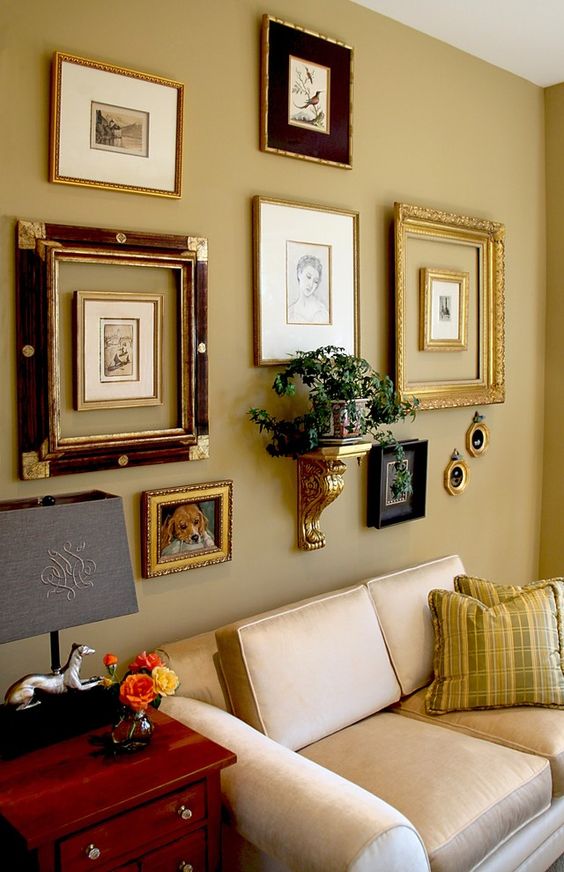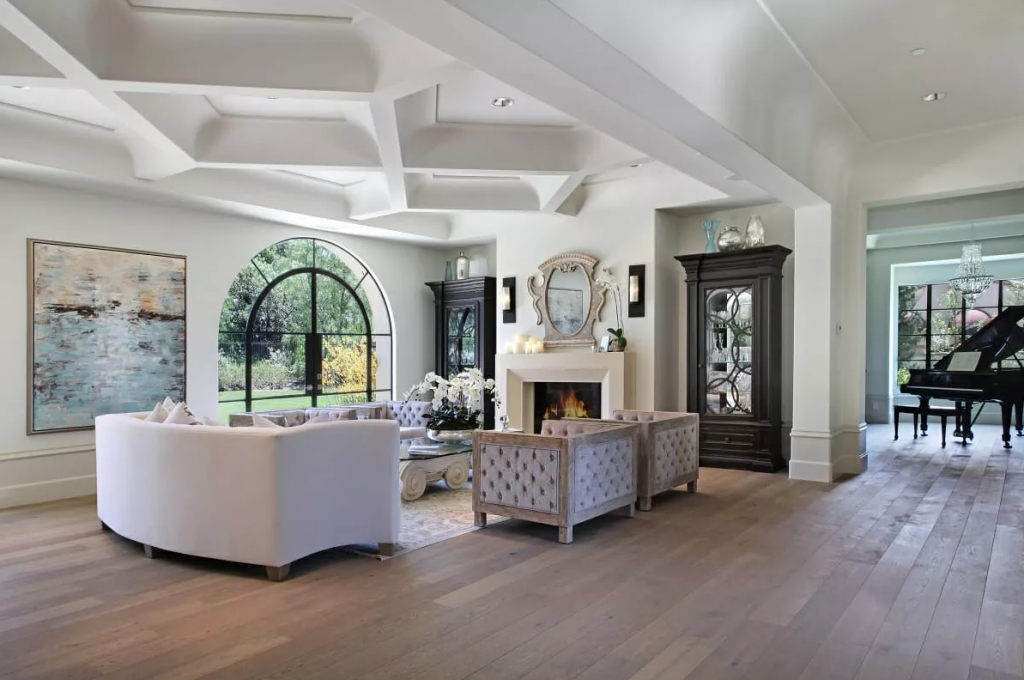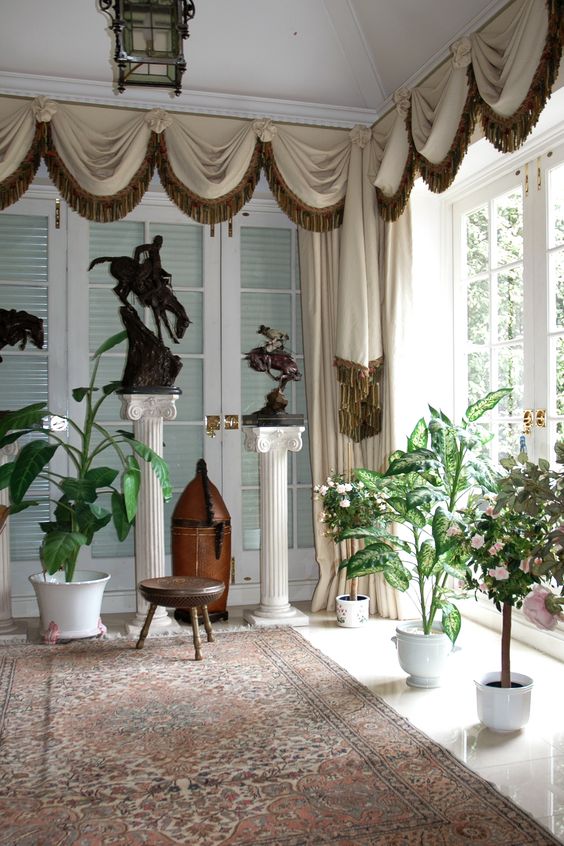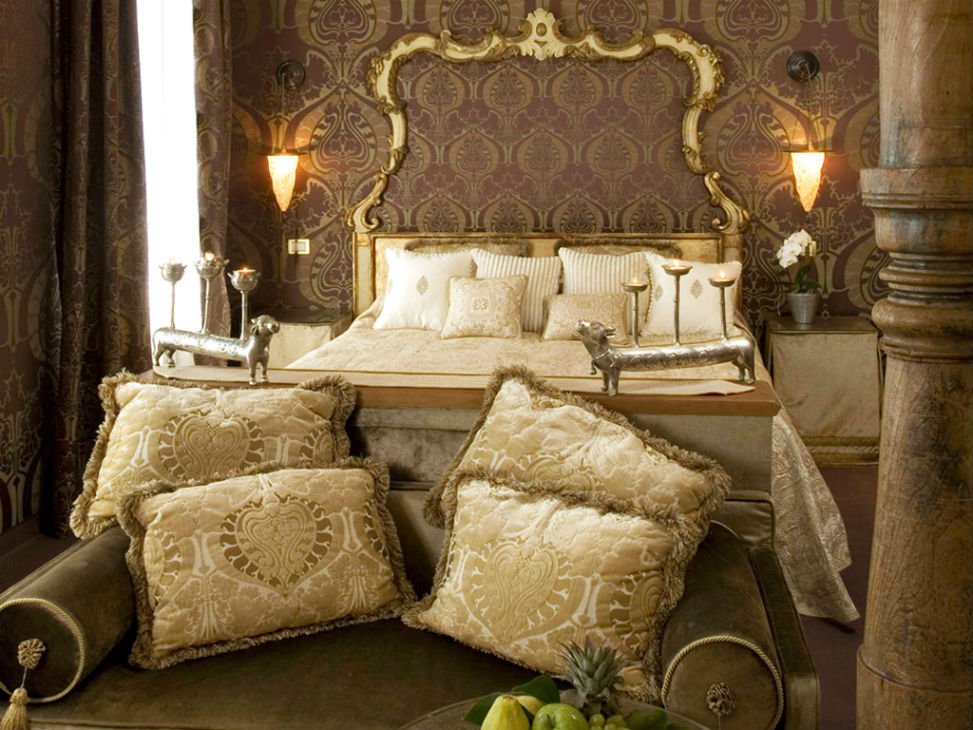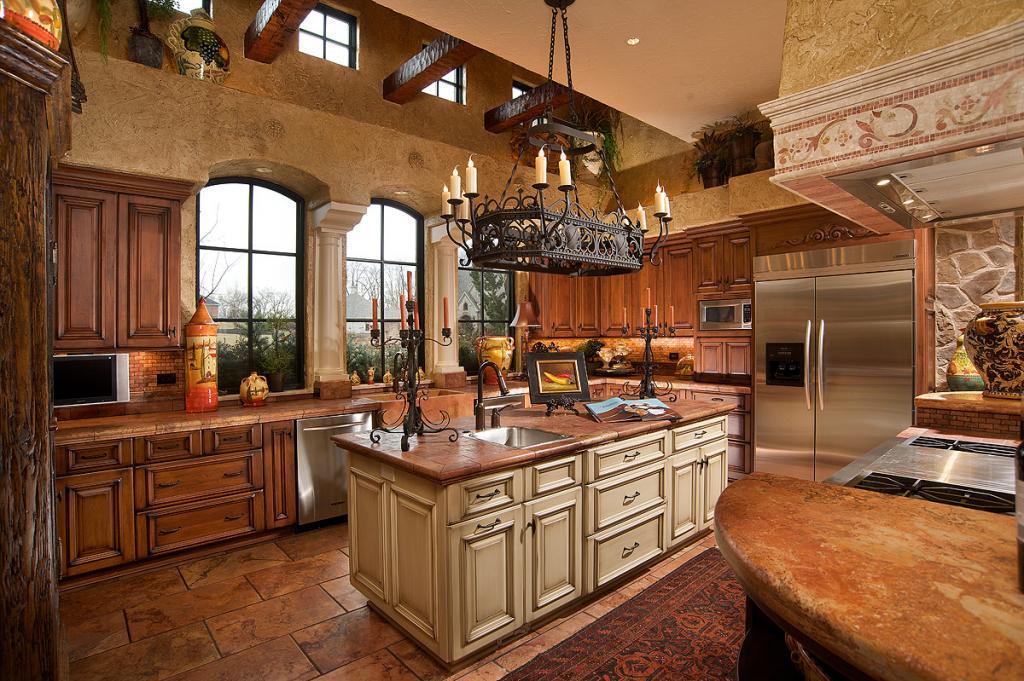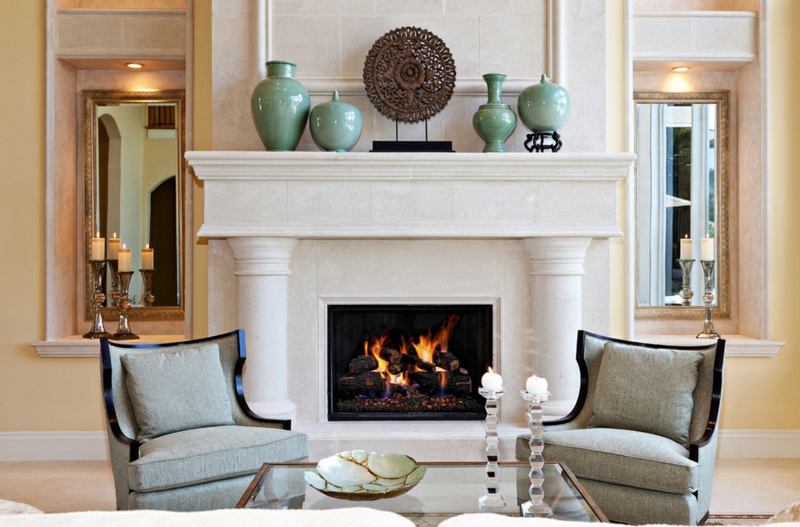Traditional Interior Design Style
When a client says, “I want my home as if it is connected to my roots but also has that modern look and feel,” this can mean that they are looking for traditional interior design, and this term has taken different definitions and meanings throughout the years.
With a traditional design, you cannot pinpoint a single era or year that can be imprinted into the client’s home. Rather it’s a mixture of different eras and styles infused with modern utilities and structures. But first, let’s refresh the mind with some basics.
Read also – 21 Most Popular Interior Design Styles
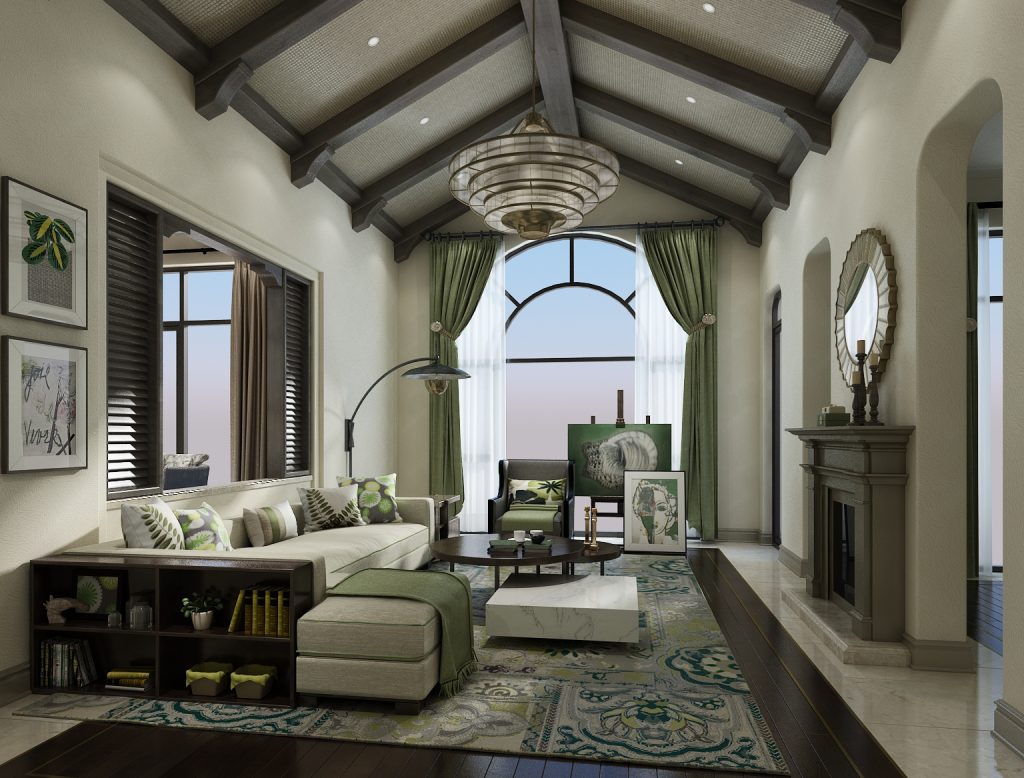
Image Credit: foyr.com
What is Traditional Interior Design and its History?
Traditional interior design may be one of the oldest forms of designing techniques in the book, but it’s meaning and execution change with time. And this is because this form of design isn’t glued to one single era or few years.
This form of a design enjoys a rich cultural history relevant and specific to the client’s affinities and history. But from time to time, designers have been juxtaposing the design elements with modernity, giving it a new shape and specific meaning for every client.
The ability to mingle with other forms of design while retaining its core nature makes the traditional design timeless, elegant, and unique. Originally, the traditional interior design styles were:
- Classy
- Symmetrical
- Have a historical connection
- Comfortable
- Subtle and not too fancy
Besides this, the traditional interior design must be manifested with:
- Wooden elements
- Warm tones
- Decorative doors
- Medallions on the ceilings
- Ornamental fireplaces
- Timeless pieces of art and decor
- Not to mention antique furniture
While working with these items and settings, you need to focus on the color palette. Experts in this field suggest that whenever you are shopping for items or scouring for the right tones, think about the rainbow of spices.
So the likes of paprika, turmeric, cumin, rosemary, oregano, etc., should give you enough to get inspired and play with colors until you get the perfect tone and hue.
Read also – Traditional Homes vs Modern Homes
Image Credit: foyr.com
Traditional Interior Design: History and Origins
Let’s face it, not one person in the whole world is now alive to exactly recite what traditional styles looked like. But we only have the old images and shared ideas as a reference.
Traditional home and interior design can be traced back to the 1700s and 1800s. This style is so old that we cannot even pinpoint a particular time frame to find its origin; what we have is a century to identify its inception.
Said to be originating from American and European homes, the traditional interior design ideas are closely related to the architectural styles of the Neoclassical and Georgian periods. We can also see some references to the Colonial styles and Hollywood regency in some places.
These ideas have been generated from the homes that were built during these periods and are still standing as it is. As these houses and infrastructure have become a beacon of light for studying the styles of that era, we have seen things like:
- Dark-colored or warm-toned furniture
- Draperies with depth colors
- Cornices and fireplaces with ornate settings
- Wall decorations framed in gold
In some homes, we have seen Queen Anne and Chippendale furniture.
Read also – 30 Traditional Living Room Ideas
Image Credit: foyr.com
Characteristics of Traditional Interior Design Style
A home embellished with traditional interior design must have two important elements:
- Consistency or Symmetry
- Elegance
Traditional homes have always exuded a classy look with their bulky designs and above-average-sized ornaments. While this is how the home would look from the outside, everything must be harmonious and complement each other.
Image Credit: mossbuildinganddesign.com
Take a look at this picture. The bathroom has an oversized mirror, and the cabinets are equally large to match it. The curtains, wall paint, and the small painting are there to compliment every setting.
Here are the characteristics of a traditional interior design. One must use them as the foundational elements of the design.
1. European Touch:
The European home style has always had two things, elegance and comfort. The same is applicable in a home designed with traditional settings and ideas. Taking inspiration from the homes built in the 18th and 19th centuries and their timelessness, this styling design needs elements that define history. Plus, they must have a set order and harmony in every room, setting, and overall.
2. Antique and Regal Furniture:
Another important element of traditional design is its bulkiness. You cannot expect to have a minimalistic setting in this form of design. The furniture items need to be sumptuous, heavy, and bulky. From an armchair to cabinets, beds, and everything else, it has to be big. When looking through some inspirations, you will find claw-footed items.
Image Credit: butchoff.com
3. Ornate Elements are all Around:
Besides being bulky, a traditional home setting also contains detailed architectural elements. For instance, look at the chair above. Besides having a claw-footed pattern, the detailed woodwork is just amazing and clearly defines that it belongs to a regal era.
Just like this, everything else, like the moldings, columns, wood panels, ceilings, etc., has to have a touch of opulence yet still retain its core character, elegance.
Another important detail; the ornamental pieces and utility-based furniture must come in pairs. So, things like armchairs, ottomans, lamps, sconces, console tables, etc. More importantly, these items are required to create balance and harmony around another focal point, like a fireplace, a television, air conditioning, etc.
Knowing what a traditionally designed home looks like and creating one are two different things. You will have to devote serious time to finding and curating the extraordinary mix of things. Yes, the process will be a fun and adventurous experience, but it will also be tiring and a tedious job to complete.
Read also – Traditional Architecture vs Modern Architecture
Image Credit: architecturaldigest.com
Features of Traditional Interior Design Styles
A key point to note in a traditional interior design is that not one home is going to look like another. Every home designed traditionally in the 21st Century is going to be unique. The designs might overlap, but they won’t overrule.
Retaining its symmetry is the key component in a traditional home design. You need to create a vibrant setting while maximizing the usage of the space. Below are some peculiar features of a traditional home interior design.
1. Colors:
You need to add some powerful colors to the walls and ceilings of a home designed in traditional style. Every home is different, and every client’s requirements are also different. While keeping the colors in mind (the spices formula), curate a rich mix of bold colors that suit the spirit and emotion you need the home to evoke.
Pro tip: Don’t use blacks and whites, as they can overpower the mixture of other things you have set in the interiors.
2. Shapes and Contours:
The furniture you choose needs to be elegant and ornate in nature with impressive detailing. But the majority of the furniture must be curved and have rounded contours. So, stay away from rectangular, hexagonal, or square-shaped items.
3. Upholstery on Furniture:
The textile and upholstery on items from the traditional era must be equally rich and vibrant. This can happen with damask, paisleys, and other items inspired by motif patterns. However, here you can add a modern touch with a black leather sofa set (see image below) but add the necessary items to complement it and help it fit into a traditional setting. The stuff you must focus on includes heavy cotton, fur, silk, velvet, and wool (plaids).
Read also – 40 Best Online Furniture Stores To Shop Trendy Furniture
Image Credit: mossbuildinganddesign.com
4. Additional Fixtures:
Traditional homes had some amount of gold items, be it in the form of a frame on a portrait or a mirror. In addition to gold, you can also check out finishes and fixtures made out of silver, brass, and oil-rubbed bronze.
A well-designed home in the traditional setting is welcoming, eases into the person’s thoughts, and evokes the emotions of the past. A good design is not something that only looks good, but it must also evoke an emotion, get the brain neurons to work, and excite the person to know or interact more with the vibrancy of the entire home.
Read also – 15 Best Celebrity Homes for Design Inspiration
10 Ways to Incorporate Traditional Interior Design Style into your Home
1. Formal Dining Room and Table
Unlike a minimalistic and comfort-first dining area, the traditional dining areas need to be formal and radiate sophistication. Go for practical and straight furnishings along with overall symmetry. Get great-looking cabinets with ample space and polished furnishings to elegant china for a great look.
Read also – 15 Ways To Add Coastal Interior Design Style To Your Home
Image Credit: architecturaldigest.com
2. Display Collections in the Right Spots
The collections of items in a traditionally designed home must be placed boldly and expressively. There is no need to keep the items in the top cabinet or place them on the front balcony. Install these pieces in the living room, drawing room, bedrooms, and everywhere else.
Read also – 10 Ways To Add Eclectic Interior Design To Your Home
Image Credit: hgtv.com
3. Picture and Frame Moldings
Try to find detailed and aesthetically designed moldings for your photos, mirrors, and paintings in the house. There is nothing better than traditional molding to stir a traditional feel in the house. When choosing these moldings, prefer the ones with intricate and delicate structures.
Read also – 12 Ways To Incorporate Wabi-Sabi Interior Design in Your Home
Image Credit: pinterest.com
4. Embellished Structures
To set the right mood for a traditional interior design, focus on the core structure of the room. Moldings and carvings on the ceiling, trim, and railings are typical elements of this design style. For homes that already have a modern structure, you can use wooden carvings and dry walls to set the design right. Adding the ceilings with classical-era chandeliers can further improve the aesthetics.
Read also – A Guide To Art Deco Interior Design Style for Your Home
Image Credit: decorilla.com
5. Spruce Up Those Windows
Heavily lined and bulky drapes are a signature sign of a traditional home. With them, you can add matching cornices and valances. The full length of drapes and curtains is further going to add some more character to the entire room. Moreover, a floor-to-top draping system makes the room look even more prominent, and we know that bulkiness is another important characteristic of traditional interior design.
Read also – 18 Ways To Integrate Japandi Interior Design Style Into Your Home
Image Credit: pinterest.com
6. Traditional Patterns
Although you need to work on adding solid and bold colors to a home that has a traditional design, also consider spicing them up with patterns. Mixed patterned fabrics like damask will bring the elegance and richness you need to show in such a home.
Follow the same principle while choosing the drapery, upholstery, and other textiles for the house. The damask fabric is going to create a tone-to-tone setting, and you won’t have to dabble with too many colors.
Read also – 16 Ways To Add Shabby Chic Interior Design Style To Your Home
Image Credit: luigi-bevilacqua.com
7. Symmetry is the Key
Aim for a symmetrical setting in every type of design you are creating in the home. Every traditional interior that you will find and we have come across has a unique symmetry to it, which is impressive, looks elegant and adds a minimalist character. The minimalist aspect represents a modern home, so it is essential to style the home this way.
Read also – Mid Century Modern Interior Design
Image Credit: homesandgardens.com
8. Antiques are the Key to Differentiation
Good and befitting antiques can sincerely add the neoclassical and traditional look that a homeowner might be looking for with the interior. From vintage accessories to columns, marble busts, urns, chinaware, and other transitional items, your selection of the things that will go with the outlook is essential.
Read also – 10 Best Mediterranean Interior Design Ideas
Image Credit: candleberryinn.com
9. Work on the Kitchen
Kitchens with a traditional interior design need to have an eclectic mix of colors and break away from the modern preferences of a minimalist setting. Rather, the kitchen must boast muted creams, some jewel tones, and some elements of Mother Nature.
One thing to add here is the silhouette-based lighting and fixtures. These things will bring out the traditional character of the kitchen.
Read also – 9 Ways To Incorporate Modern Interior Design Style In Your Home
Image Credit: thewowdecor.com
10. Marbled Mantels
The last thing on our list for a traditional interior design is decorating the mantels, which are a focal point in the room. Mantels attract everyone’s eyes, and they become the spotlight if decorated nicely. You can try out some sculptures, objects of relevance, vases, etc. However, their placement is the key.
Read also – 11 Modern Rustic Interior Design Ideas For Your Home
Image Credit: decosolitions.com
The best thing about living in a modern world is the capabilities we have gained and the possibilities we can explore. Implementing a traditional interior design is not an easy job; we know that.
But Foyr Neo can make this easier while helping you transition from a screen model to a real-life design accurately. Foyr Neo is offering great inspiration designs helping designers complete every home decor project at double speed and much less time than any other solution available out there.
Conclusion
Traditional interior design styles may be based on the past, but they aren’t obsolete. The detailing and ornamental finishing in these designs makes the design functional, comfortable, and family-friendly.
Interior designers working on such designing styles for their clients need to retain the bulky, classy, and elegant character while focusing on symmetry, harmony, and cohesion with the modern-day lifestyle. So while things like crown moldings, damask patterns, and gilded mirrors are common, they also need to be adjusted according to a modern lifestyle.
FAQs
1. What is a traditional interior design?
A traditional interior design is inspired by the European and American decorating styles of the 17th, 18th, and 19th centuries. It includes elements of homes built in the Victorian and colonial-era added with the comfort and utilities of a modern-day home.
2. What are the elements of traditional interior design?
Traditional interior design styles use bold colors overlapped with neutral tones on the walls and carved-out ceilings, moldings, etc. It has traditional furniture with round shapes and contours added with antiques to bring out the character from the past.
3. What is traditional design?
Traditional designing is the name given to the process of transforming a modern design to look like a home from the 17th to 19th centuries. Even though the utilities and appliances are modern, the setting and outlook are traditional.
4. What is traditional decor?
Traditional decor ideas include items, furniture, antiques, upholstery, and embellishment arranged in a symmetrical manner. The decorative styles go back to the neoclassical and mid-century modern era and include elegant colors, paintings, wallpapers, classy draperies, damask or paisley upholstery, textured rugs, and much more.
5. What colors are traditional?
Traditional colors are bold and have neutral tones. Experts like Albert Munsell consider three traditional colors: yellow, red, and blue.
6. What makes a home traditional style?
A lot of elements come together to transform a home into a traditional home. These include neutral colors, furniture pieces, cabinetry, china, furnishings, decor items, window treatments, light fixtures, antiques, dark wood, rugs, draperies, and whatnot. All in all, the mixture of classic items placed comfortably and symmetrically can easily be billed as traditional space.








